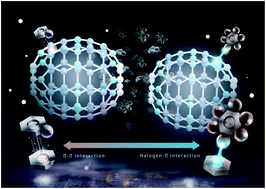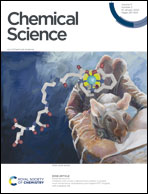Separation of halogenated benzenes enabled by investigation of halogen–π interactions with carbon materials†
Abstract
The halogen–π (X–π) interaction is an intermolecular interaction between the electron-poor region of bonded halogen atoms and aromatic rings. We report an experimental evaluation of the halogen–π (X–π) interaction using liquid chromatography with carbon-material coated columns providing strong π interactions in the normal phase mode. A C70-fullerene (C70)-coated column showed higher retentions for halogenated benzenes as the number of halogen substitutions increased as a result of X–π interactions. In addition, the strength of the X–π interaction increased in the order of F < Cl < Br < I. Changes to the UV absorption of C70 and the brominated benzenes suggested that the intermolecular interaction changed from the π–π interaction to X–π interaction as the number of bromo substitutions increased. Computer simulations also showed that the difference in dipole moments among structural isomers affected the strength of the π–π interaction. Furthermore, we concluded from small peak shifts in 1H NMR and from computer simulations that the orbital interaction contributes to the X–π interactions. Finally, we succeeded in the one-pot separation of all isomers of brominated benzenes using the C70-coated column by optimizing the mobile phase conditions.



 Please wait while we load your content...
Please wait while we load your content...